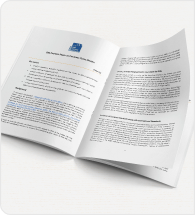SBS just published a position paper to raise awareness on the discrepancies between the European Assessment Documents (EADs) and the Eurocodes design requirements and propose solutions to clear up the confusion these inconsistencies generate for construction SMEs.
SBS published a position paper showcasing the complications arising from conflicts between several European Assessment Documents (EADs) developed within the European Organisation for Technical Assessment (EOTA) and Eurocodes design requirements developed by CEN. The paper is contributing to the undergoing discussions for a review of the Construction Products Regulation (CPR) which aims to regulate all the construction products that are placed in the EU market by providing a common technical language to assess their performance.
Generally, performance is assessed based on harmonised standards. European Assessment Documents are developed as an alternative for some construction products that are not covered by a harmonised standard to provide information on their performance assessment and draw up a declaration of performance. Eurocodes are the European reference design codes developed by CEN that provide common structural rules for the design of buildings. Eurocodes, even if they are not included in the CPR, are generally accepted by the Member States as a presumption of conformity with the CPR basic requirements.
During the revision of Eurocodes, SBS experts highlighted some cases where the design information included in EADs conflicts with the Eurocodes. These inconsistencies undermine the use of Eurocodes as reference design codes and their international promotion. Furthermore, experts showcase insufficient cooperation between EOTA and CEN at the drafting stage. While the overlaps can be reported, the current conditions do not allow for their timely resolution.
Such contradictory requirements create confusion for the construction sector SMEs. With the paper, SBS aims at initiating a dialogue with the European Commission to define strict rules in order to avoid existing and future conflicts in this regard. The paper proposes some preventive mechanisms that could provide solutions, establishing a reinforced cooperation between CEN and EOTA.



























